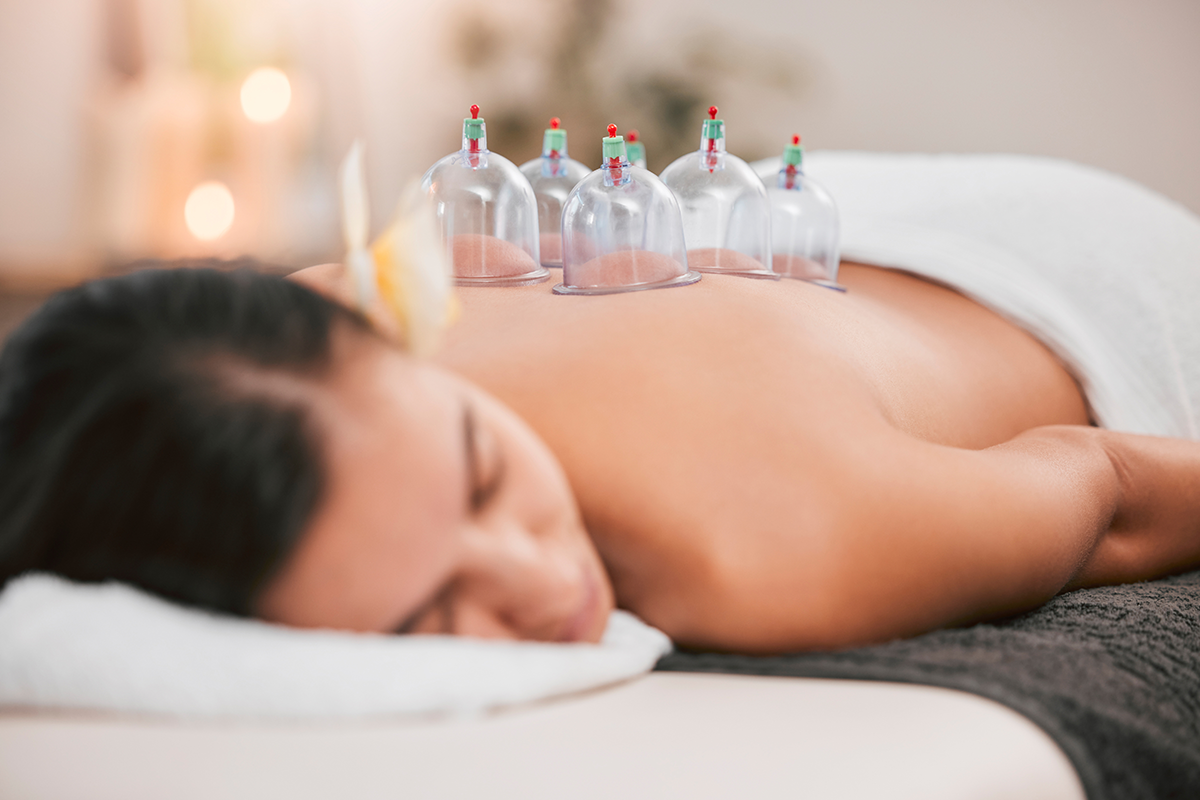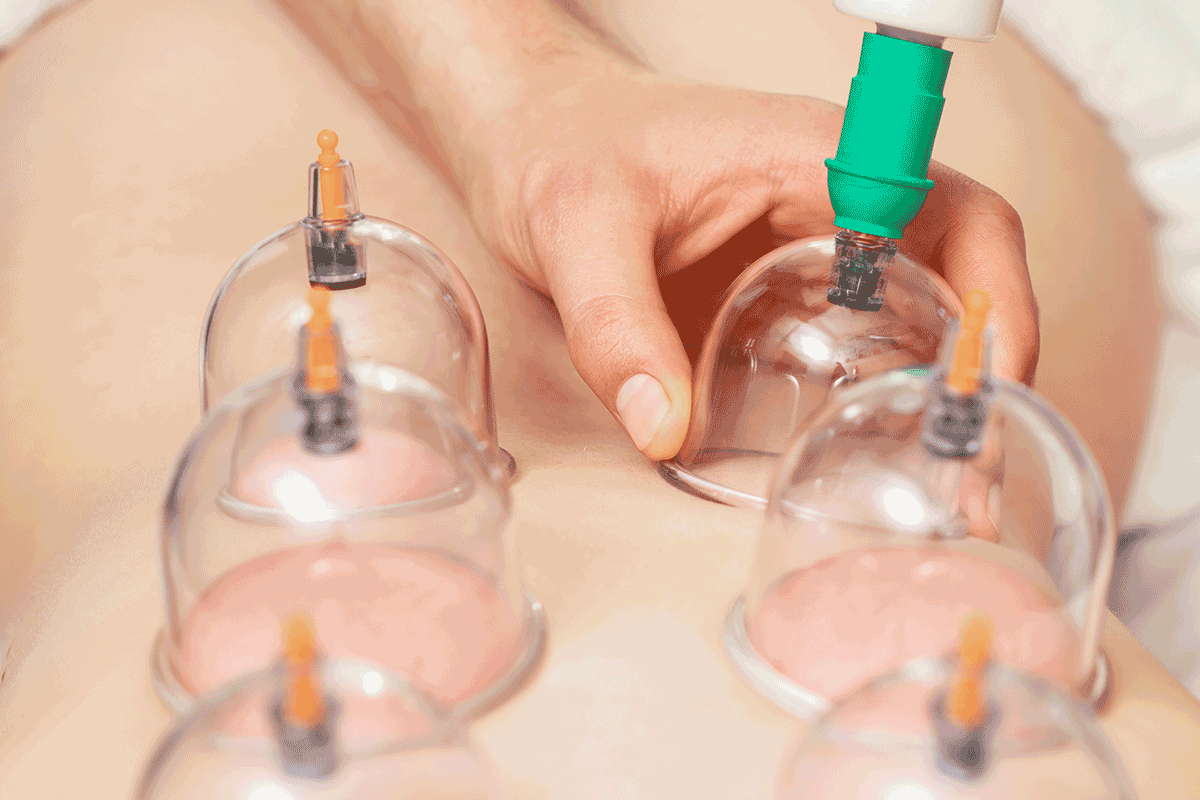

Cupping Therapy in Singapore: Benefits, Techniques & What to Expect
In Singapore, cupping is a popular ancient healing technique that has been included in wellness routines. As a gentle, effective solution, more and more people are turning to this natural therapy for pain relief, muscle recovery, and overall health maintenance.
Whether you’re new to holistic treatments or looking to enhance your overall health, this centuries-old technique offers natural relief. Our trained professionals use specialised cupping methods to boost circulation, aid detoxification, and restore balance effectively.
What Is Cupping Therapy and How Does It Work?
Cupping therapy is an ancient form of alternative medicine in which a therapist puts special cups on your skin for a few minutes to create suction. Rooted in traditional Chinese medicine (TCM), the treatment helps with pain, inflammation, blood flow, relaxation, and well-being.
The Traditional Chinese Medicine (TCM) Approach to Cupping
In TCM, cupping has various approaches. All cupping methods use cups that are placed upside-down along acupoints on the body for a few minutes. The air in the cup will cool or be sucked out, creating a vacuum that causes your skin to rise and redden as your blood vessels expand.
With enhanced blood circulation, cupping promotes better Qi (energy) flow, encourages detoxification in areas of stagnation, helping restore balance in the body for pain relief and improved vitality.
At Spacio, therapists may use flammable substances like alcohol, herbs, or paper to heat the cups before placement, following traditional fire cupping methods. When complemented with a massage, the increase in blood flow helps loosen up restricted muscles naturally.
Key Benefits of Cupping Massage for Health & Wellness
There are many benefits of getting a cupping massage, which are:
- Improving Blood Circulation: Enhances flow to muscles and tissues.
- Relieving Muscle Tension: Eases stiffness and promotes relaxation.
- Easing Pain: Helps with back pain, neck pain, and migraines.
- Strengthening Immune Function: Stimulates immune response and recovery.
- Calming the Nervous System: Reduces stress and tension.
Supporting Athletic Recovery: Helps athletes recover from soreness and injuries faster.
Cupping Therapy Techniques and Treatment Process
Cupping therapy at Spacio combines TCM philosophies with modern wellness techniques. Depending on your needs, our therapists may use dry cupping, massage cupping, moving cupping, or fire cupping to stimulate circulation and relieve tension.
What to Expect During a Cupping Massage Session
When you arrive, our therapist will first assess your condition by asking questions and conducting a full body analysis. This will determine which areas should be targeted during the treatment for optimal results.
During the treatment, cups are placed on meridian points on your body to create a vacuum effect. You may feel a tight pulling sensation, which is normal as blood vessels start to expand. Cups typically remain in place for up to 3 minutes, and temporary circular marks may appear afterwards as a natural part of the healing process.
How Cupping Differs from Other Massage Therapies
Unlike traditional massages, massage and cupping work together to lift tissue, promoting blood flow from deep muscle layers. It targets stagnation points and improves Qi flow, something traditional massages may not address.
While standard massage therapies focus on muscle knots, cupping draws out toxins, reduces inflammation, and enhances lymphatic flow, supporting the body’s natural healing processes.
Why Choose Cupping Therapy at Spacio?
At Spacio, cupping therapy is performed by accredited therapists in a relaxing, supportive environment. We combine TCM principles with client-specific assessments to ensure each session is safe, effective, and personalised.
Who Can Benefit Most from Cupping Therapy?
Cupping therapy is ideal for people with:
- Chronic muscle pain or tension
- Poor blood circulation
- Sports injuries or delayed recovery
- Fatigue, migraines, or stress
- Desire for natural, non-invasive therapy
Additionally, Spacio highlights that cupping may help with anaemia, arthritis, fertility issues, eczema, high blood pressure, anxiety, and bronchial congestion.
It’s suitable for many, but not recommended during pregnancy or if you have certain skin conditions. Remember to always consult a health provider before trying cupping therapy.


Results, Aftercare, and Long-Term Effects
Cupping therapy provides immediate and lasting wellness benefits. From relaxation to recovery, understanding proper aftercare can enhance results.
How Long Do the Effects of Cupping Therapy Last?
The benefits of cupping can be felt almost immediately, especially in pain relief and muscle relaxation. Most experience relief for several days after treatment. For ongoing concerns, therapists may recommend sessions every week or every 2 weeks.
Best Aftercare Tips to Maintain Your Cupping Benefits
To maximise the benefits of cupping therapy, follow these aftercare tips:
- Stay warm and avoid cold showers post-session
- Hydrate well to flush out toxins
- Avoid hot therapies like saunas, steam rooms, and baths
- Incorporate soothing self-care practices such as meditation and deep-breathing exercises
- Monitor symptoms for future sessions
- Follow the recommended session plan
Frequently Asked Questions
How long does it take to see results from cupping therapy?
You can see results from the first cupping therapy session.
How many sessions are needed for optimal results?
We recommend 1-2 sessions a week for optimal results.
Is cupping therapy suitable for everyone?
Safe for most, but consult your healthcare provider first.
How does cupping compare to other massage techniques?
Cupping lifts tissue, boosts circulation, and aids healing.
Are the results from cupping therapy permanent?
Results aren’t permanent, but regular sessions help.
Is cupping therapy painful?
Cupping isn’t painful, but may cause tightness or bruising.